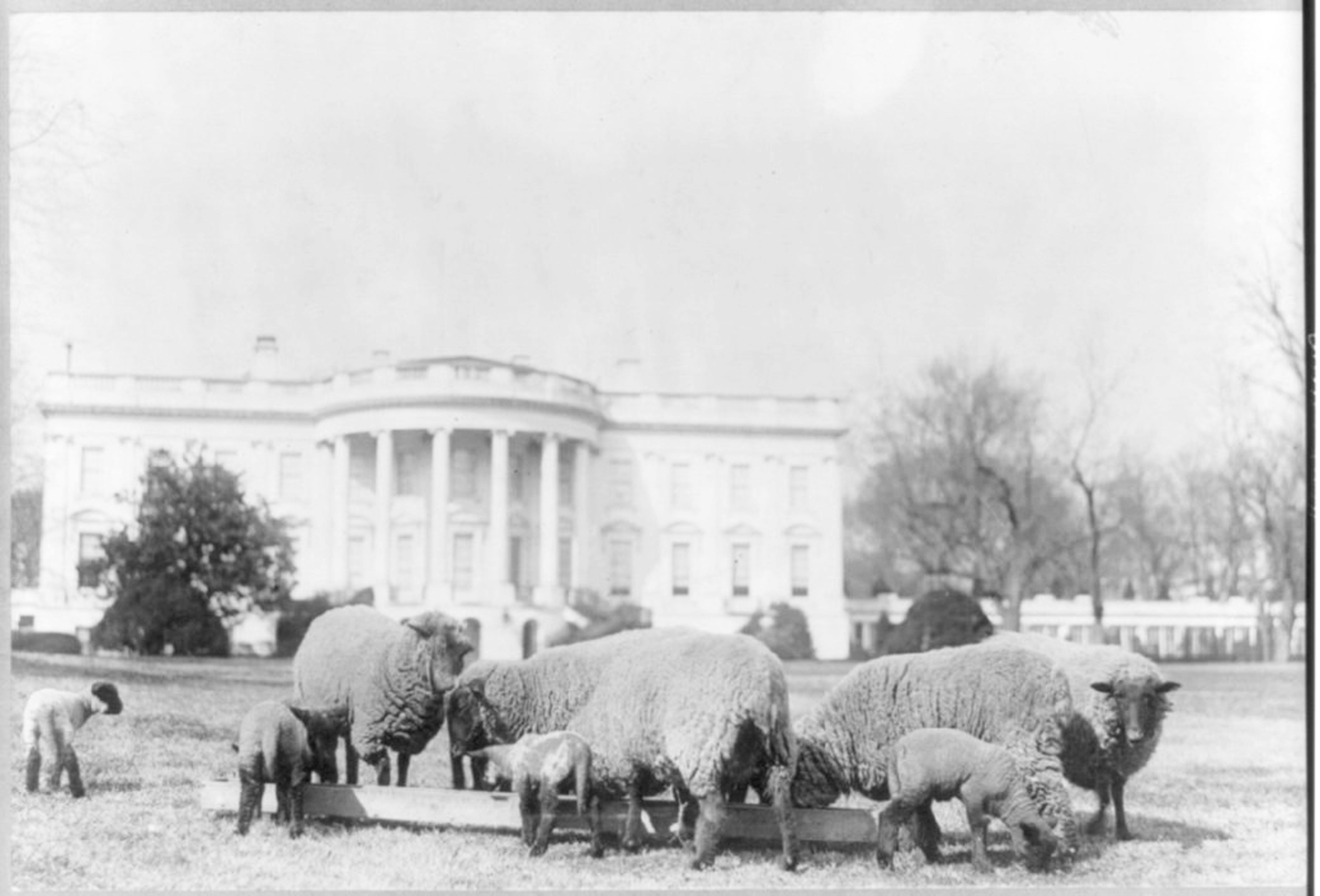Who were America’s greenest presidents?
Published 4:18 pm Tuesday, February 19, 2019

- Amanda’s Animal Fact of the Week During World War I, President Woodrow Wilson kept a herd of sheep on the White House lawn. He did this as a visible sign of support for the troops, since help was hard to find and the sheep could cut the grass. They auctioned off the wool from the sheep and gave the money to the American Red Cross. Photo courtesy of Library of Congress/Publicdomain.
Since we just celebrated Presidents Day this week, I’ve been thinking about the great power presidents have over environmental policy and the potential they have to do good, bad or nothing at all.
I think we have all seen how who is in charge of the country can make a big environmental impact. I first wrote about this concept in 2014, and to prove my point, there has been a drastic change in our nation’s environmental policies between then and now.
There might not be any one person who can have more of an effect on the U.S. environment than whoever is president. With that in mind, here is a countdown of my top eight “greenest” presidents:
8. William “Bill” Clinton
42nd U.S. president (1993 to 2001)
Clinton helped ban the building of roads on nearly 60 million acres of land located in national forests. He also created 17 national monuments and expanded the land of four national monuments, which preserved 4.6 million acres of land. He got $3 billion added to annual funding to research clean energy technologies; and he strengthened the Drinking Water Act.
7. Abraham Lincoln
16th U.S. president (1861 to 1865)
Lincoln is most famous for things other than environmental legislation. But Lincoln was the first president to set aside land for public enjoyment. He did this by making the Yosemite Valley in California a public trust. Lincoln also established the U.S. Department of Agriculture and signed legislation to create the Land Grant agricultural university system.
6. Woodrow Wilson
28th U.S. president (1913 to 1921)
Wilson is known for leading the U.S. during World War I. But he also signed the Smith-Lever Act, which established cooperative extension services — the same offices so many of us use in our local counties all the time — to educate people about new ideas in agriculture, home economics and other related topics. He also approved legislation creating the National Park Service.
5. Lyndon B. Johnson
36th U.S. president (1963 to 1969)
Johnson signed the Wilderness Act, which protected more than 9 million acres of federal land. He also signed the Endangered Species Preservation Act, the Land and Water Conservation Act and the National Trails System Act.
4. Theodore “Teddy” Roosevelt
26th U.S. president (1901 to 1909)
Roosevelt established the U.S. Forest Service and added more than 190 million acres of new public lands, including national forests, parks and monuments. During his presidency, he was able to create 50 wildlife refuges and five national parks.
3. James “Jimmy” Carter
39th U.S. president (1977 to 1981)
Carter created the Department of Energy, with the goal of promoting clean and alternative fuels. Carter was also able to expand the National Park System by adding protection for 103 million acres of land in Alaska. And in 1979, he had 32 solar panels installed on the roof of the White House (The panels were later taken down by Ronald Reagan in 1986).
2. Richard Nixon
37th U.S. president (1969 to 1974)
Nixon, though infamous for other things, signed into law a truly astounding amount of environmental legislation. Nixon signed the bill establishing the Environmental Protection Agency. He also signed the Clean Air Act, Coastal Zone Management Act, the Marine Mammal Protection Act, the Endangered Species Act, the Ocean Dumping Act and the Safe Drinking Water Act. And he had a hand in passing or amending the Toxic Substances Control Act and the Federal Insecticide, Fungicide and Rodenticide Act. You might think that would be enough to land Nixon at the top of my list, and it would be except for what was accomplished by …
1. Franklin Delano Roosevelt
32nd U.S. president (1933 to 1945)
Roosevelt created the Civilian Conservation Corps, which planted an estimated 2.3 billion — yes, billion — trees between 1933 and 1942. That’s in the vicinity of 230 million trees every year, or more than 630,000 trees a day. I checked and re-checked that fact with multiple sources because it’s so unbelievable. The group built 800 new state parks, constructed hiking trails and cleaned up streams. In 1935, Roosevelt signed the Soil Conservation Act which created the Soil Conservation Service, which worked to develop ways to combat soil erosion.
I’d like to note the many different places I found information about all these presidents’ environmental actions. Many thanks to Mother Nature Network, the Washington Post, Good Housekeeping, whitehouse.gov, the USDA, Scientific American, PBS and the Association of Public and Land-Grant Universities.






